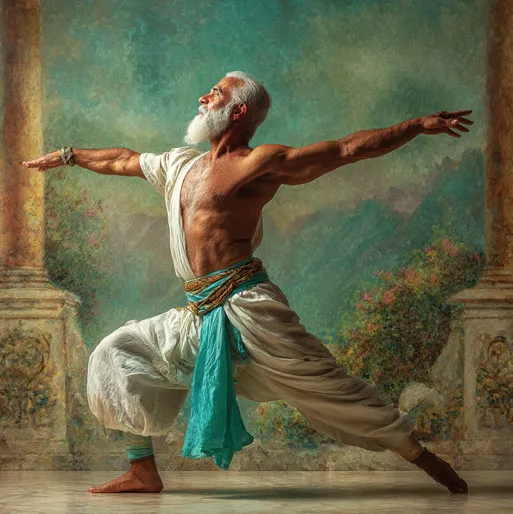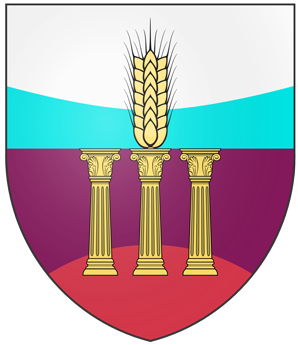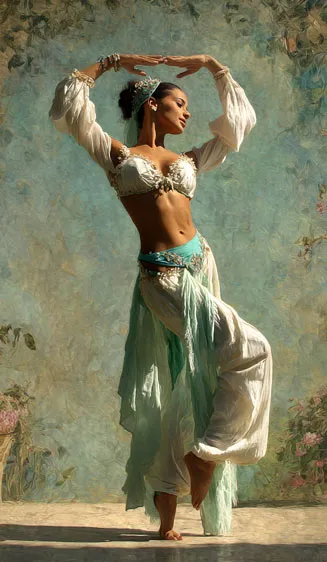Shal ak Esri - Mentors of Elements
"You can only harness the power of the elements, little Arishta, if you express your feelings with gentle movements of your body. Consider them the poetic signature of your soul. Once you have mastered them, it would be possible to tell entire stories about your element with them, even though this might have disastrous consequences."- Shal ak Esri to the 8-year-old Princess of Akhadi -
Development of the Profession
"Our motto is: Our strength lies in the movement of balance. The coat of arms of our order depicts the three pillars of the elementary teachings and the Golden Grain, the origin of our existence. The colors red and purple refer to the coat of arms of the "Golden Grain." White and turquoise represent the colors of our robes and symbolize the purity of the soul and balanced movements."
Studies
Work as a Mentor
Imadeen stood in the palace training room before the four royal mentors, holding a ribbon his sister had given him. Each mentor greeted him with a dance-like sway and conjured some elemental magic before his wide-open eyes. He was only six, and until then, he had only observed his sisters performing similar fluid or jerky movements in the garden. At first, he didn't understand what they were doing and thought it was a dance, even though inexplicable things happened. Once, his hair was ruffled or he was splashed with water. But then his sisters showed him the first steps and called it Eleh-Sekh-anuri. Imadeen let the mentors' magic work its magic on him, scrutinizing each one. Then he handed the ribbon to an older mentor with a friendly expression, who accepted it gratefully. "I am Nilofar Zanit, and I will accompany you on your journey of magical learning. Do you know what that means?" Imadeen nodded and smiled. "Then, young prince, let us begin."











What a lovely article! I love how each mentor develops a close connection to their students and ensures they learn well ^^
Thank you :).
Here are my Entries for the water continent Ulűri̋qi̋